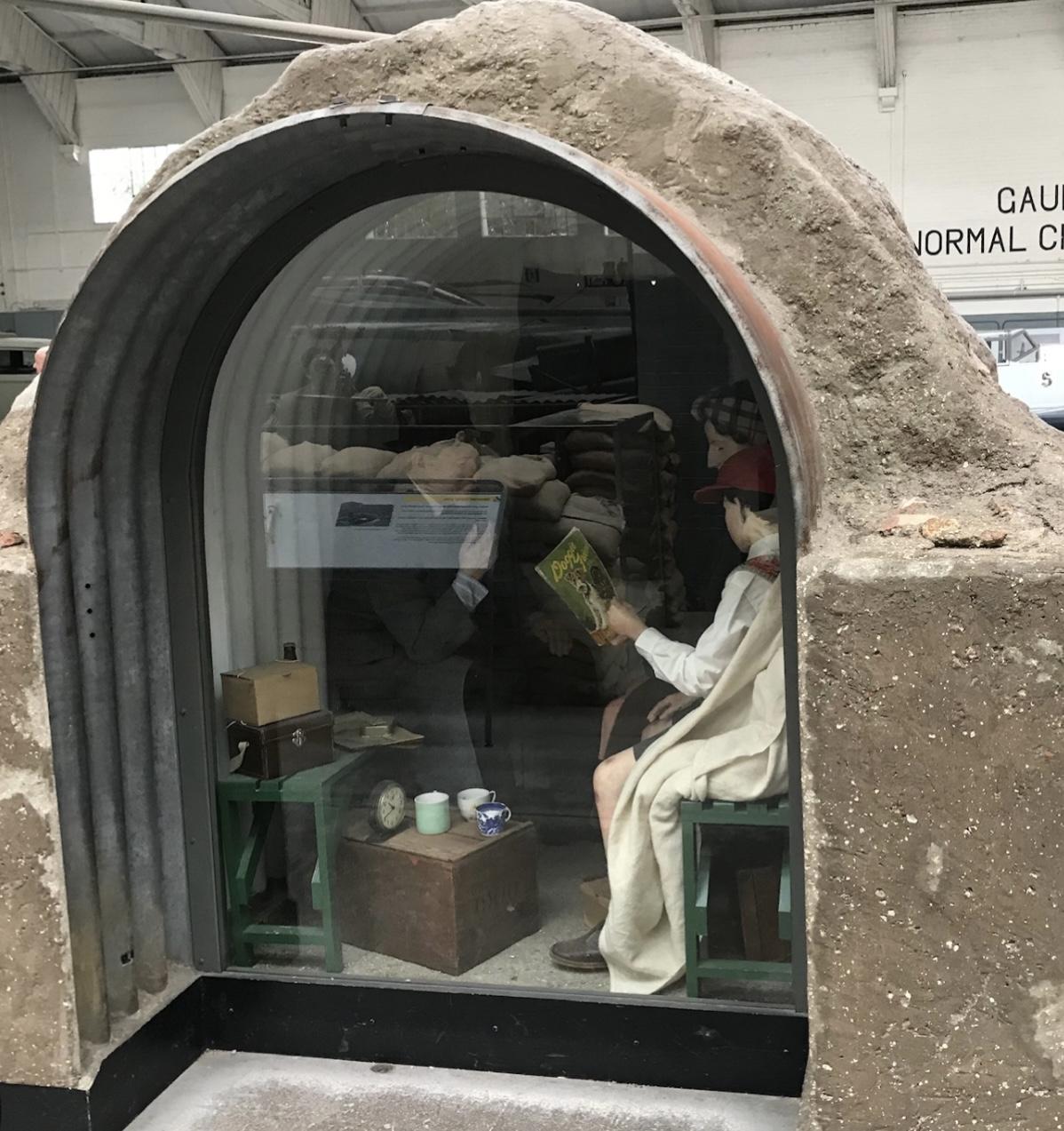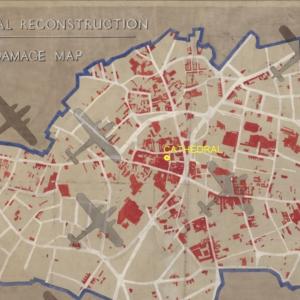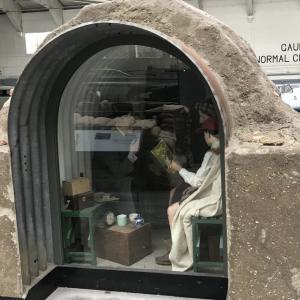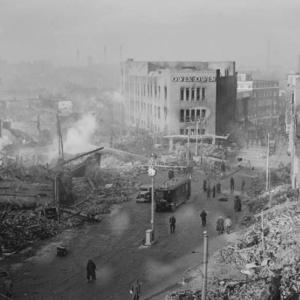
Anderson Air raid Shelters
The Anderson air raid shelter was Britain’s do-it-yourself answer to the threat of bombing in the late 1930s. It was a mass-produced kit of corrugated galvanised steel panels that an ordinary household could bolt together and sink into the back garden. It was named after Sir John Anderson, the minister overseeing civil defence, but the practical engineering was carried out by William Paterson and Oscar (Karl) Kerrison in 1938. The design brief was for something cheap, strong and quick to produce. The result was a light, arch-shaped shell designed to be half-buried and heaped with earth, turning a few sheets of steel into a remarkably tough little shelter.
Kits were supplied on a means tested basis. If your household income was under £250 a year, you got a free shelter. If you earned more, you paid £7 for one. The government began distributing them before the war and kept going through the Blitz. By the end of production around 3.6 million Anderson shelters had been made and issued nationwide. In the frantic months before war broke out alone about 1.5 million were already in gardens.
A standard kit used corrugated steel panels, usually six curved roof pieces with straight pieces for the sides and two end plates, plus a bag of bolts and a simple spanner or tommy bar to assemble it. Erecting one was a weekend job for a couple of adults following the printed instructions. The finished shell measured roughly 6 ft 6 in by 4 ft 6 in and stood about 6 ft high before sinking it, with capacity for up to six people, normally described as four adults and two children. Extension units were available for larger households.
The installation method was as important as the steel. You dug a trench around four feet deep, set the shelter into it, then covered the arch with at least 15 to 24 inches of earth and built up the sides and back with soil. If the shelter stood some distance from the house, an extra earth bank around the doorway was recommended. Later guidance authorised concrete floors and lining in flood-prone areas, because water ingress was a common complaint in places where the water table was high. Official diagrams at the time show the earth cover and entrance baffle that made the little structure work.
Protection was aimed at the most likely dangers of an air raid, such as blast, flying debris and collapsing masonry. Properly installed, an Anderson could tolerate heavy debris loads and withstand the effects of a medium sized bomb exploding a few feet away. The corrugation gave strength and the surrounding earth absorbed shock and shrapnel. In exchange for that strength you accepted the compromises that many people still remember: they were dark, cramped, noisy in a raid and often damp unless you added a sump or concrete floor.
Inside, families made them as habitable as possible. Typical fittings were timber benches or bunk frames down each side, a centre aisle with duckboards, hooks for coats, a battery lamp and blankets kept in galvanised bins to stay dry. Some local authorities later supplied bunks in the London area. Many households camouflaged the mound with turf and turned the roof into a vegetable patch: not pretty, but practical and very much in keeping with the Dig for Victory spirit.
As a piece of emergency engineering the Anderson’s record is very impressive. There is no single reliable figure for how many lives they directly saved, because survival depended on distance, bomb size and how well the shelter was installed. Reports at the time do make it clear that millions of people used them night after night during the Blitz and that domestic shelters were a major reason casualties in Britain were not far higher. They were intended for short emergencies but in practice people slept in them regularly during periods of heavy bombing, which tells you how much trust people put in them.
There were official instructions for rapid *blocked text* and sinking, and by mid 1940 householders were legally required to put up and earth cover their shelters. In October 1939 a smaller four person version appeared and tiered prices were set for larger sizes. After the war many were dismantled and the corrugated iron reused for sheds and allotments. Others became tool stores or chicken houses. A surprising number still survive in gardens today. They stand as reminders of a design that did exactly what was needed: simple materials, straightforward installation, and real protection when it mattered most.










